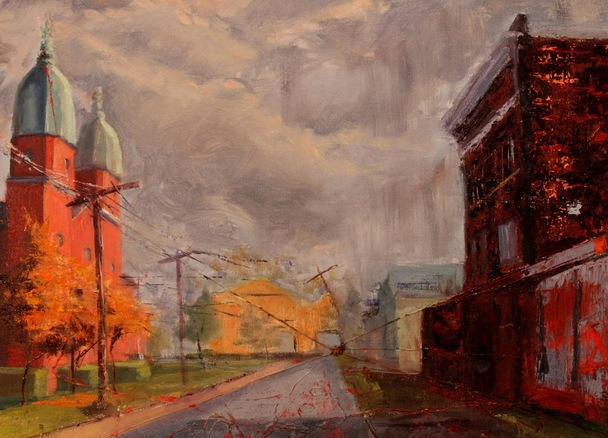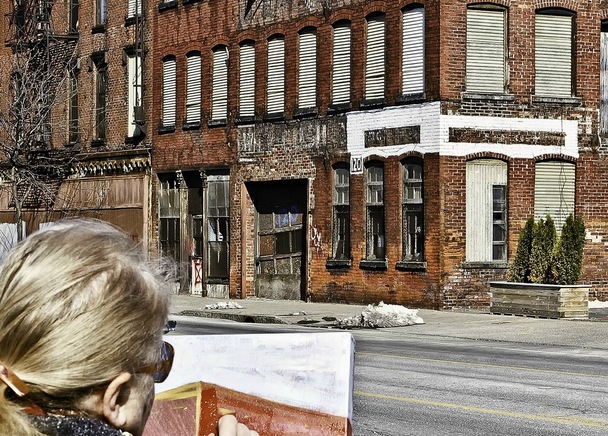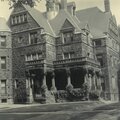
Last year, Painting for Preservation visited the Fairfield Library, St. Vincent’s Orphanage, Vaux Barn and Central Terminal, among several other locations. Artists of all skill levels are welcome.
Painting by Sara Zak
On a crisp fall afternoon, Sara Zak sips her Starbucks coffee and shuffles through images on her computer. Last year, Zak founded Painting for Preservation, a community of artists hoping to draw attention to at-risk and historic buildings. Yet here we sit inside an international franchise situated among dozens of generic storefronts. The irony isn’t lost on her.
“This is against everything Painting for Preservation stands for,” Zak says with a laugh. “Artists key into their environment, so when artists explore [historic] areas they see an untapped source of beauty. It’s really inspiring. Whereas, unless you’re Andy Warhol, Mighty Taco signs and whatnot are not inspiring.”
For Zak, art and historic preservation have always fit naturally together. But after painting and researching distressed buildings for fifteen years, she realized she needed a larger group to really grab people’s attention. “With artists, you have an untapped group of people who really are preservationists,” Zak says. “They want to see their communities thrive and they’re invested in the arts.”
Thus, Painting for Preservation was born. Its first gathering was this past March at the blacksmith shop on
Because of these events, Meagan Baco, the group’s co-organizer and lead researcher, has a renewed appreciation for these beautiful structures. “Even as a preservationist, I’m on the clock,” says Baco, who works as a historic preservation project assistant at Clinton Brown Company Architecture. “I don’t often go, sit and look at a building for five hours. It’s a whole different level of understanding.”

Bernice Smith renders Rudnicki’s Blacksmith Shop, constructed in 1852, at Painting for Preservation’s first art-in.
Steve Siegel Photo 2011
In the short term, Painting for Preservation seeks to showcase and save these remarkable structures. And in the long run, Baco says the group’s art and photography could help future historians. This past summer, for instance, the group captured St. Mary’s-On-The-Hill Church as it was torn down, creating a historical record of images and information on the parish and its congregation.
Baco speaks from experience: In writing the National Register application for the Genesee Gateway block, her company relied heavily on a Charles Burchfield painting titled “Street Scene,” the only known period image of the street. “This painting ended up being used similar to a historic photograph to inform the rehabilitation of these buildings,” she says.
Painting for Preservation hosted its first exhibition at the newly revitalized Statler Hotel during the National Preservation Conference in October – a perfect occasion for the group’s debut, which featured work from 51 artists. This year, the group plans to host eight to ten events, including ones at the Colonel Wilkeson house on
Setting down her coffee, Zak reminisces on growing up in
“Buildings are important,” Zak continues. “We preserve them in paintings, photos or prints, and it’s worth preserving the physical structure too.”
For more information, visit paintingforpreservation.com.









